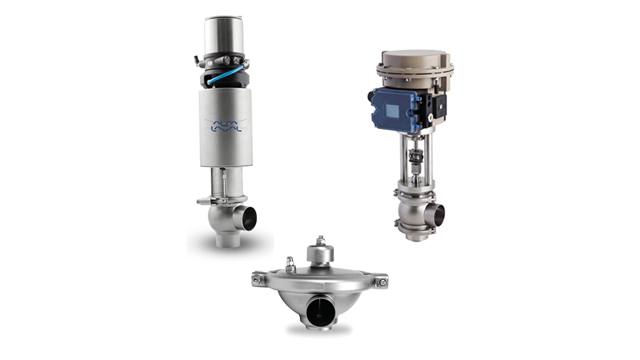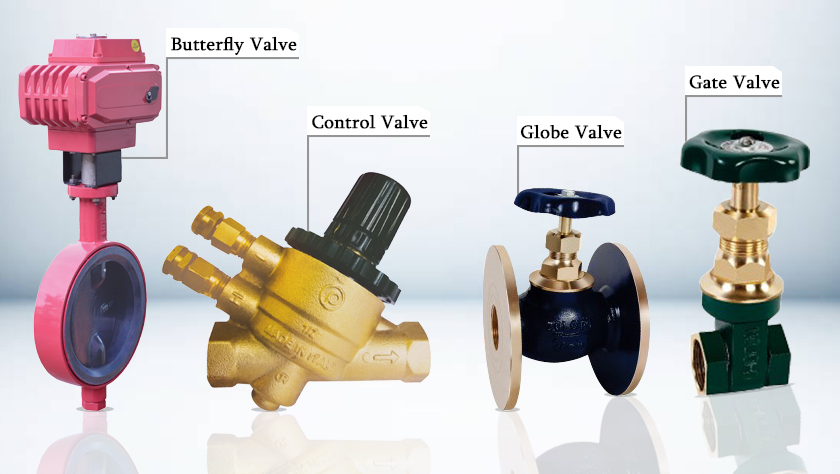The Role of Control Valves in Liquid Flow Management Equipment
Achieve Seamless Assimilation and Control With Top Quality Structure Automation Controls
In the realm of modern building management, the relevance of quality building automation controls can not be overemphasized. As innovation remains to development, the integration and control of numerous systems within a structure have actually evolved to be extra sophisticated and effective. The seamless procedure and monitoring of illumination, A/C, security, and various other building features have come to be paramount for boosting occupant comfort, power performance, and overall operational performance. Nevertheless, the trip in the direction of attaining real assimilation and control is a multifaceted one, with factors to consider ranging from system compatibility to cybersecurity. Accepting quality building automation controls is not merely a matter of ease yet a tactical critical for companies aiming to maximize their facilities' efficiency and sustainability.

Advancement of Structure Automation Controls
Throughout the past couple of years, the evolution of building automation controls has significantly transformed the way buildings are managed and run. Originally, constructing automation systems mostly concentrated on basic functions such as controlling heating, air, and air flow conditioning (HVAC) systems. As technology advanced, these controls have actually come to be more innovative, enabling for a larger variety of building systems to be incorporated and handled centrally.
The advancement of constructing automation controls has seen a change in the direction of even more smart systems that can adjust to changing conditions in real-time. This adaptability is crucial for enhancing energy efficiency and making sure occupant comfort. Additionally, contemporary building automation controls currently provide functions such as anticipating maintenance, remote monitoring, and information analytics, enabling facility managers to make data-driven decisions to enhance building performance.

Advantages of Top Quality Assimilation
The improvement in building automation regulates towards more intelligent systems has actually emphasized the considerable benefits of high quality assimilation in enhancing structure procedures and enhancing general effectiveness. Quality integration of developing automation controls provides a number of vital advantages. It leads to improved power performance by allowing different systems to function together effortlessly, guaranteeing optimal performance and minimizing energy waste. Second of all, top quality combination boosts resident comfort and productivity by enabling personalized control over ecological settings like air, lights, and temperature level quality. This modification can cause a more comfortable and helpful working or living environment. In addition, high quality integration simplifies upkeep and troubleshooting processes, as all systems are interconnected and can be monitored and controlled from a central user interface. This centralized control likewise provides better presence and insights into structure performance, enabling proactive upkeep and optimization strategies. Overall, the advantages of high quality combination in structure automation controls are indisputable, providing increased effectiveness, convenience, and functional efficiency.
Boosted User Experience and Ease Of Access
Enhancing customer interaction with building automation manages via intuitive style and boosted availability elevates the total experience for owners and facility supervisors alike. By concentrating on individual experience, building automation systems can become a lot more efficient and user-friendly. Instinctive user interfaces, clear navigation, and customizable settings empower individuals to engage with the controls easily and properly.
Accessibility attributes play a critical duty in guaranteeing that all people, consisting of those with handicaps, can utilize the building automation controls effortlessly. Incorporating functions such as voice commands, responsive switches, and color-contrasted screens can enhance ease of access and make the controls a lot more comprehensive.
Moreover, boosted customer experience brings about greater individual contentment, raised productivity, and much better decision-making. Residents can readjust environmental setups according to their preferences, while facility managers can successfully handle and monitor structure systems - control valves. In general, focusing on customer experience and accessibility in building automation controls contributes to a more seamless and effective structure atmosphere for all stakeholders included
Lasting Practices With Automation

Moreover, automation can facilitate the assimilation of eco-friendly energy resources such as photovoltaic panels or wind generators into building procedures. By automatically adjusting energy usage based on the availability of renewable resource, buildings can further decrease their dependence on non-renewable resources. This smooth integration of sustainable methods not just benefits the environment however additionally enhances the general functional performance and cost-effectiveness of the structure. Through automation, structures can straighten with modern-day sustainability objectives and add to a greener future.
Future Trends in Structure Control Equipment
One noticeable pattern forming the future of structure control systems is the boosted combination of Artificial Knowledge (AI) and device discovering. In addition, the Web of Things (IoT) is revolutionizing structure control systems by attaching sensors and gadgets to improve and improve procedures effectiveness.
One more crucial pattern is the focus on cybersecurity procedures to secure versus prospective hazards to developing automation systems. As structures end up being extra interconnected, making sure durable cybersecurity procedures will be necessary to safeguard delicate information and prevent unapproved access.
Additionally, the shift in the direction of cloud-based platforms is getting momentum, permitting systematized control and remote access to structure systems. This facilitates much easier surveillance, maintenance, and updates, enhancing the total efficiency and flexibility of building control systems. As innovation continues to breakthrough, these patterns are expected to form the my latest blog post future landscape of structure automation controls, driving advancement and sustainability in the built environment.
Conclusion
Finally, developing automation controls have developed dramatically, using numerous advantages such as boosted customer experience, availability, and sustainable methods. Quality integration plays a crucial duty in achieving smooth control and efficient operation of building systems. Future trends in structure control systems are most likely to focus on further improving automation capabilities for enhanced power performance and overall efficiency. It is vital for structure proprietors and drivers to focus on the fostering of top quality structure automation regulates to maximize building procedures and accomplish long-term sustainability objectives.
In the world of modern-day building management, the significance of high quality structure automation controls can not be overemphasized. In general, the advancement of building automation regulates proceeds to drive development in the building administration sector, providing new opportunities for creating smarter and extra sustainable structures.
The advancement in building automation manages towards more intelligent systems has highlighted the substantial benefits of top quality assimilation in optimizing structure operations and boosting overall efficiency. Overall, focusing on user experience and accessibility in building automation controls adds to a more seamless and efficient building setting for all stakeholders included.
It is crucial for building owners and operators to prioritize the fostering of high quality building automation manages to enhance structure procedures and achieve lasting sustainability goals. - control valves